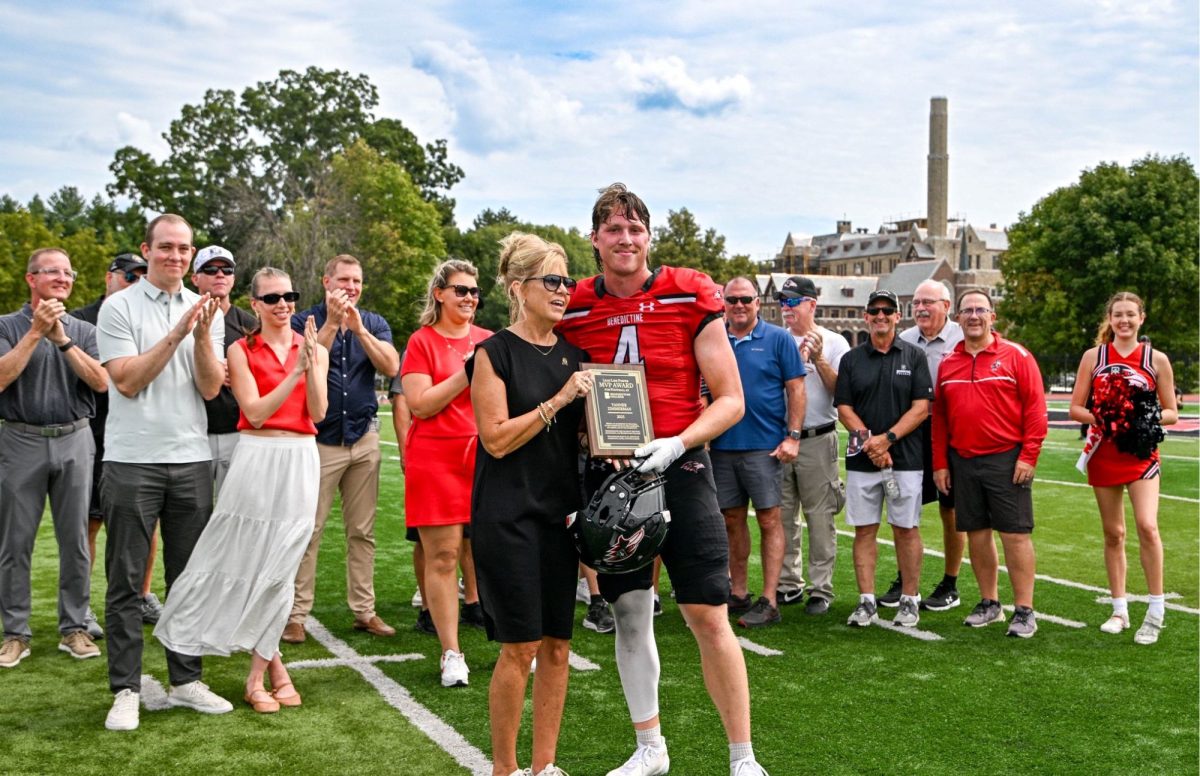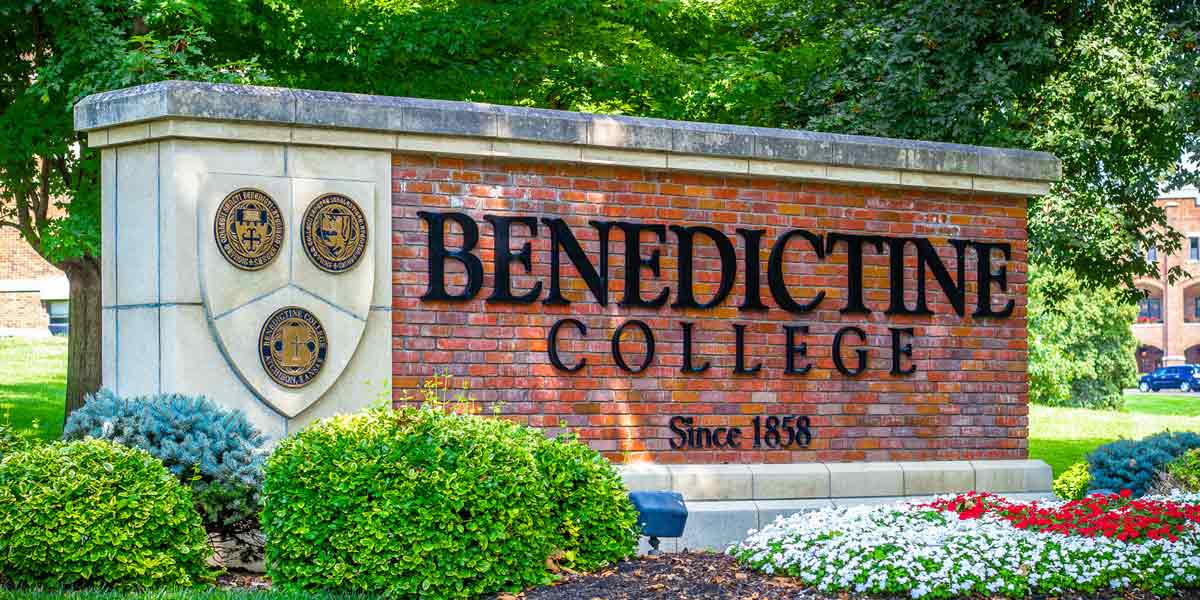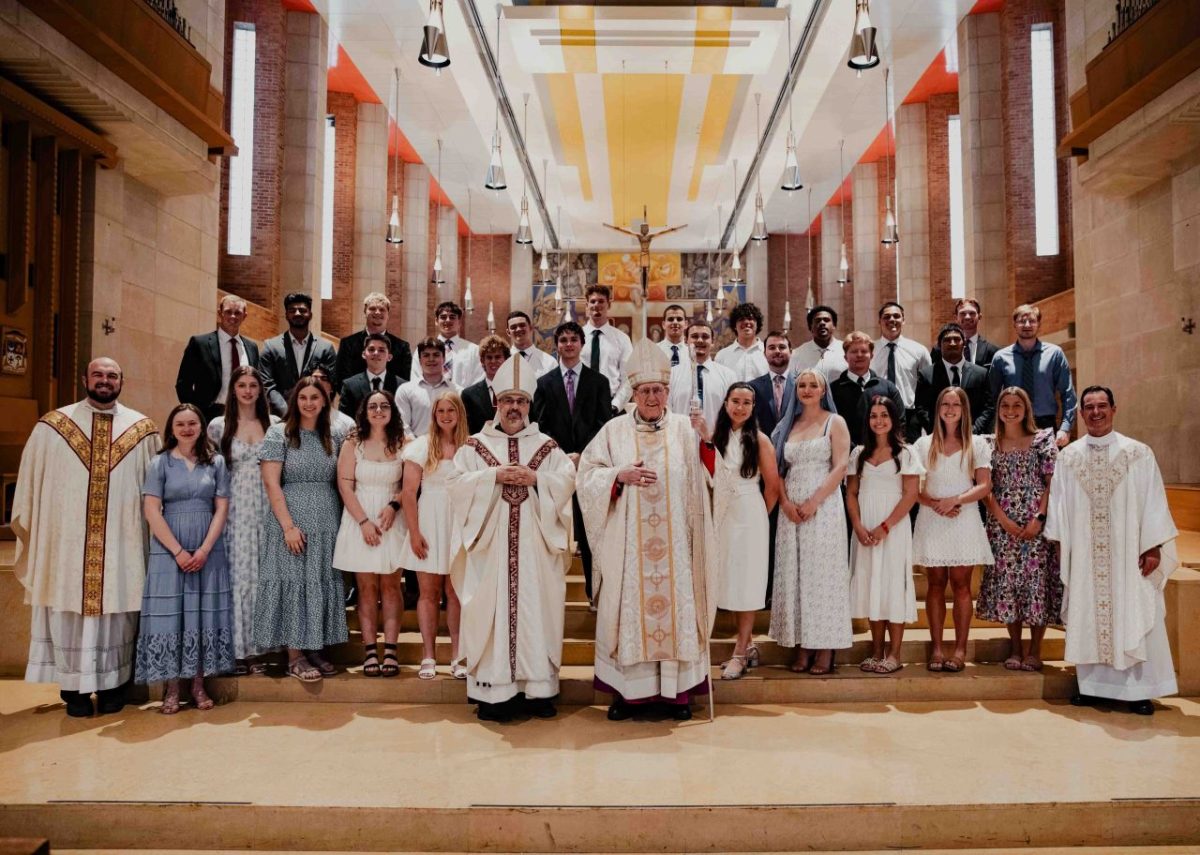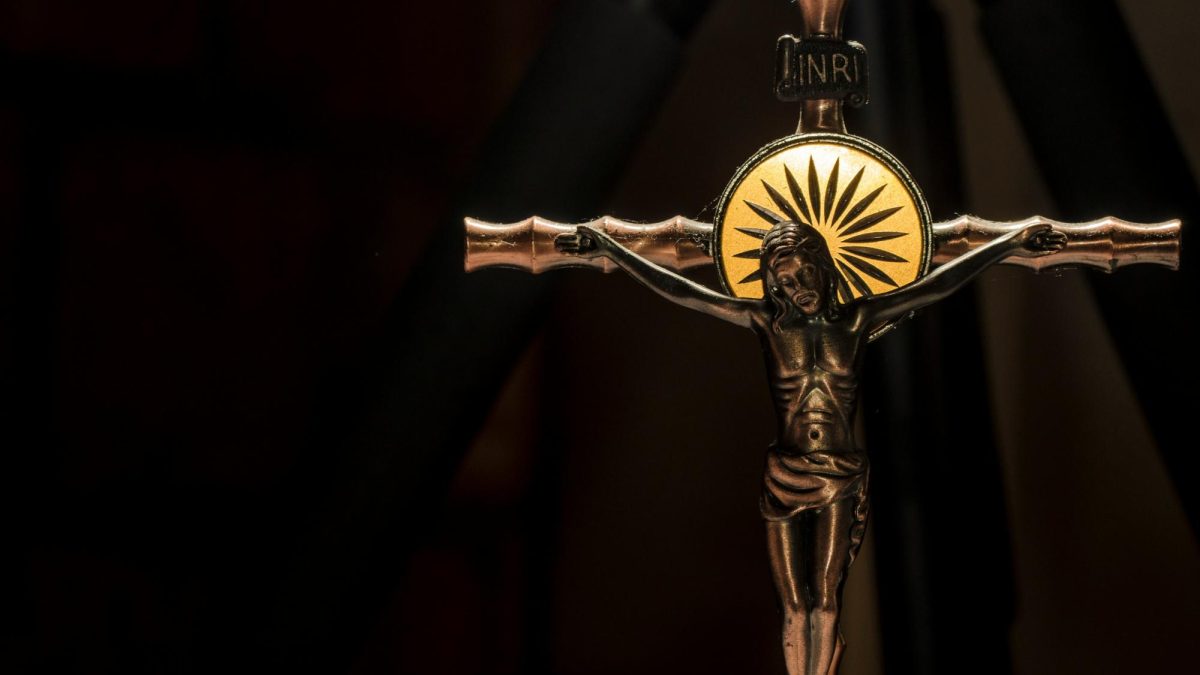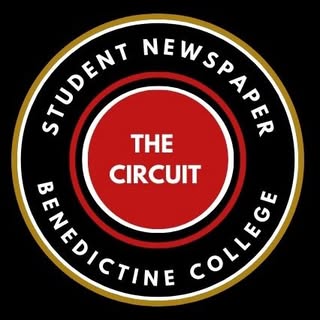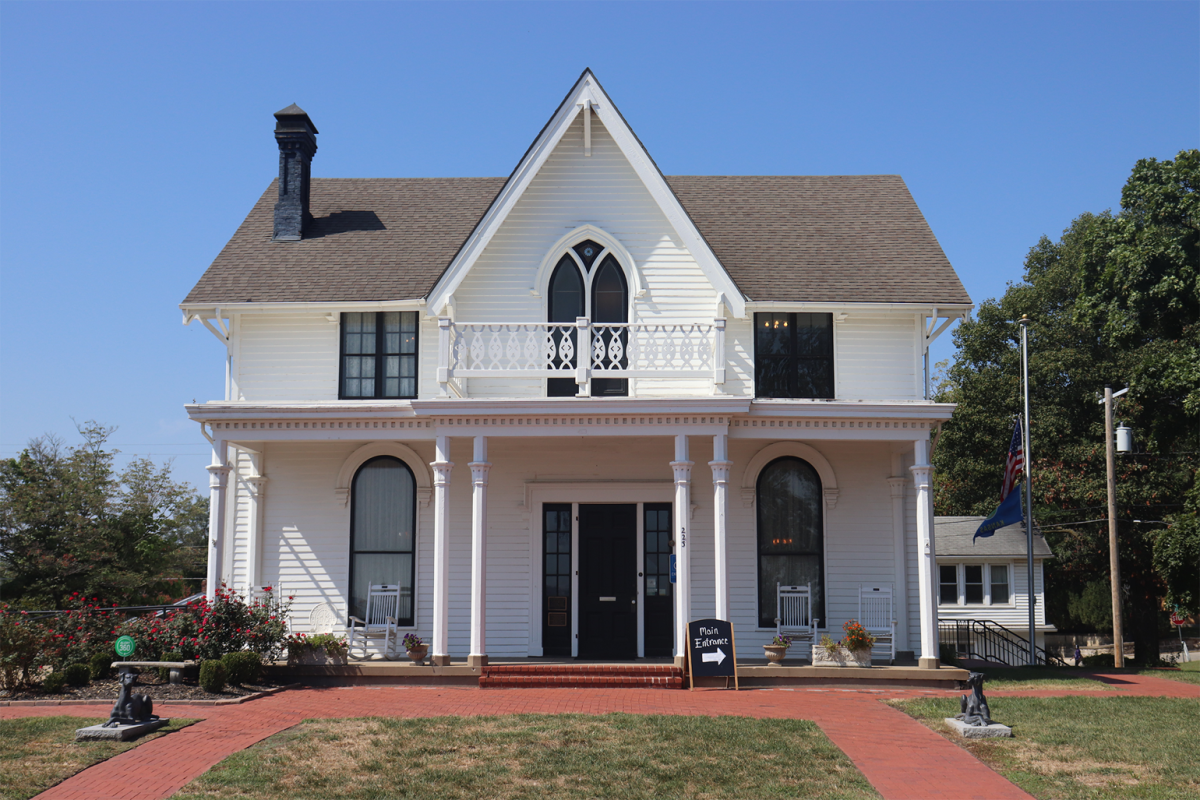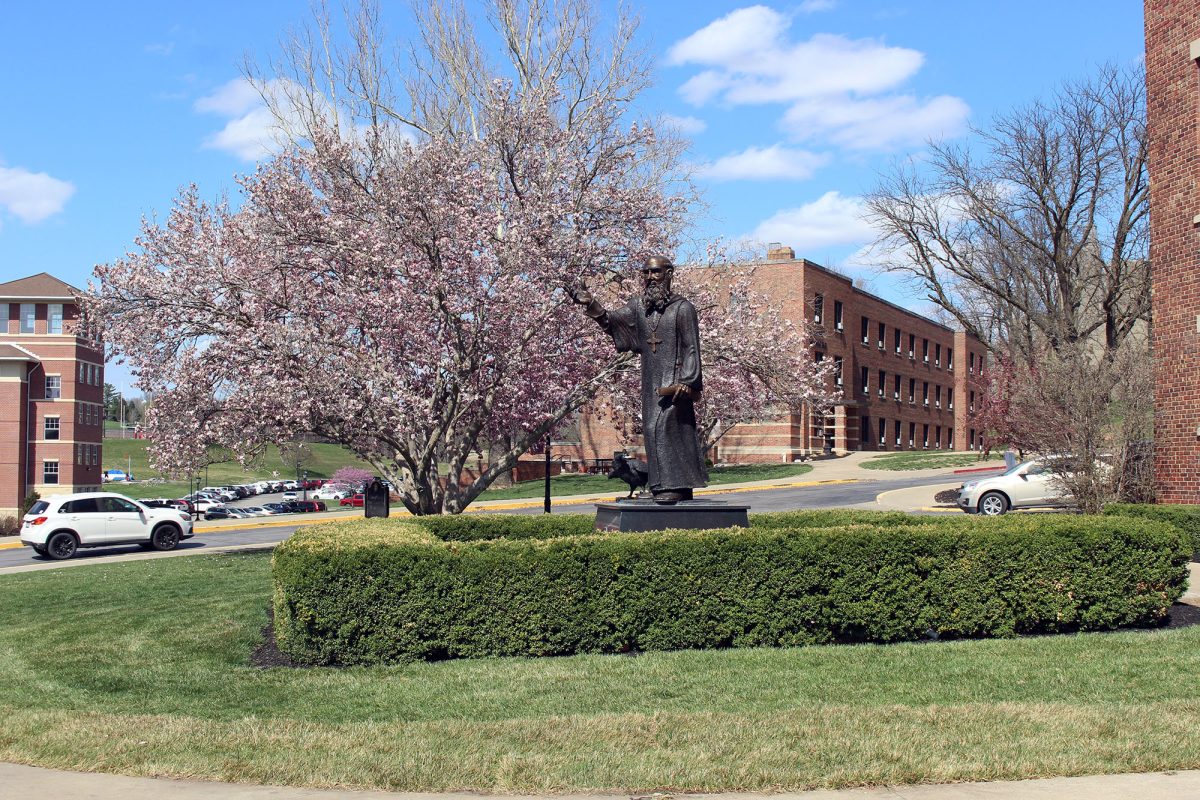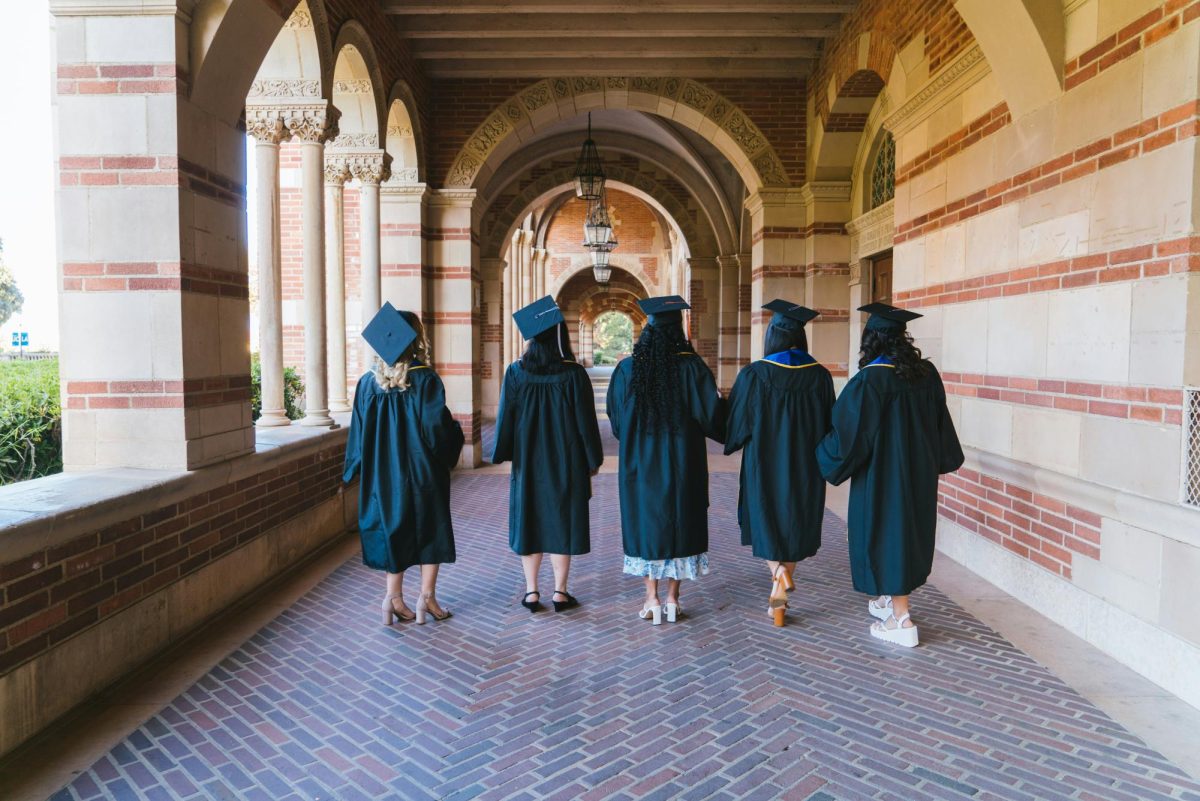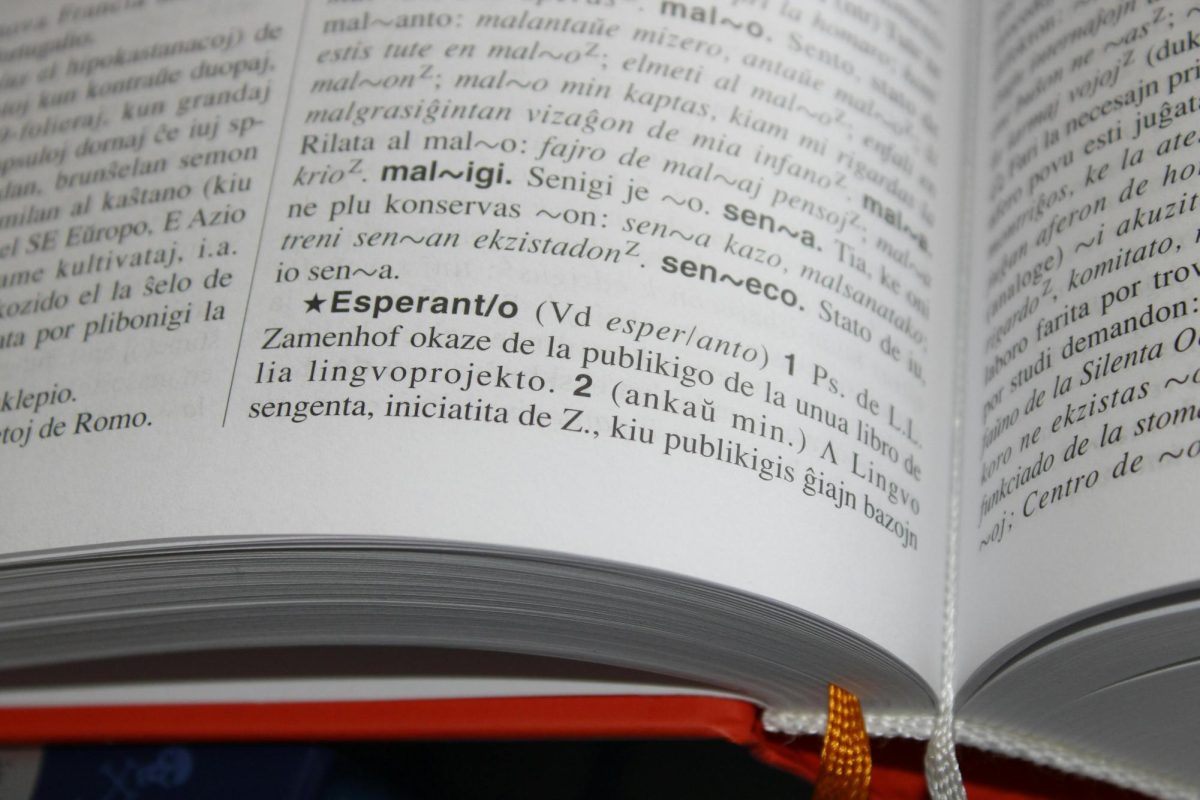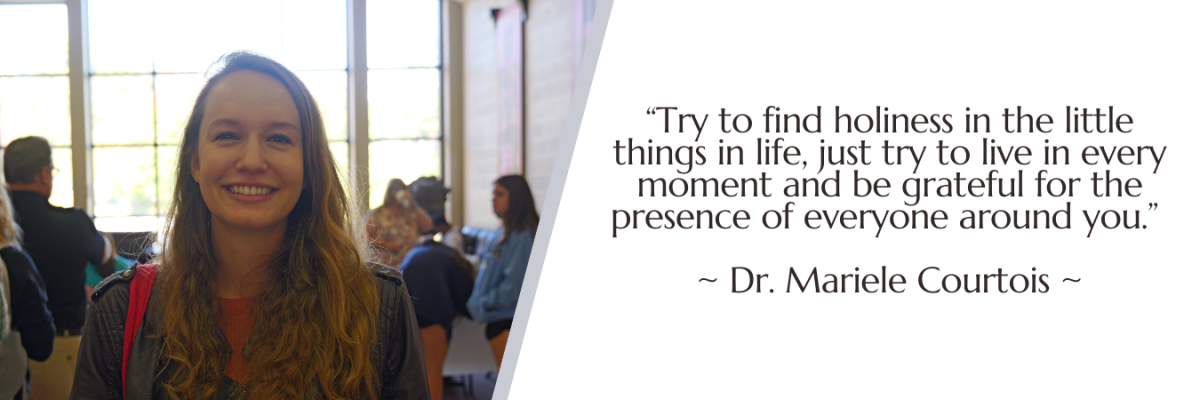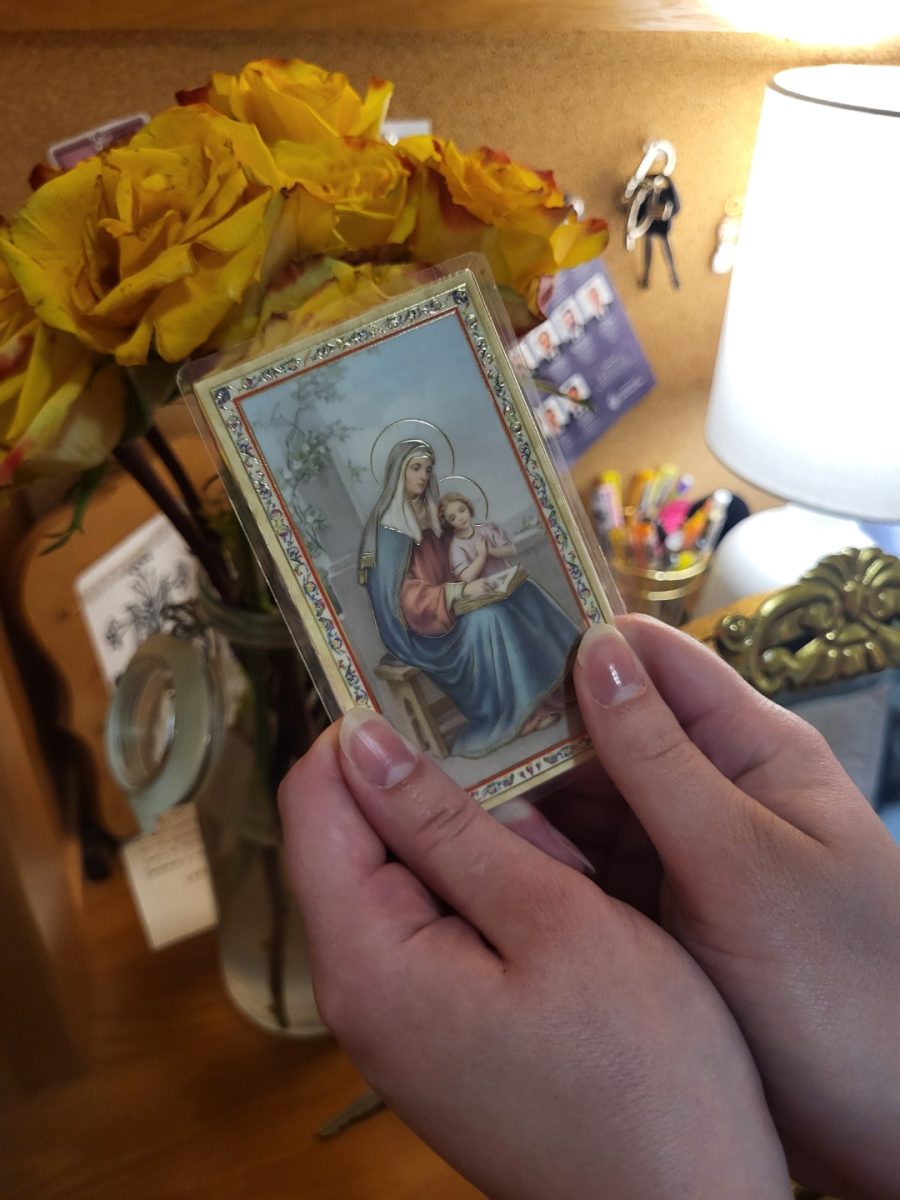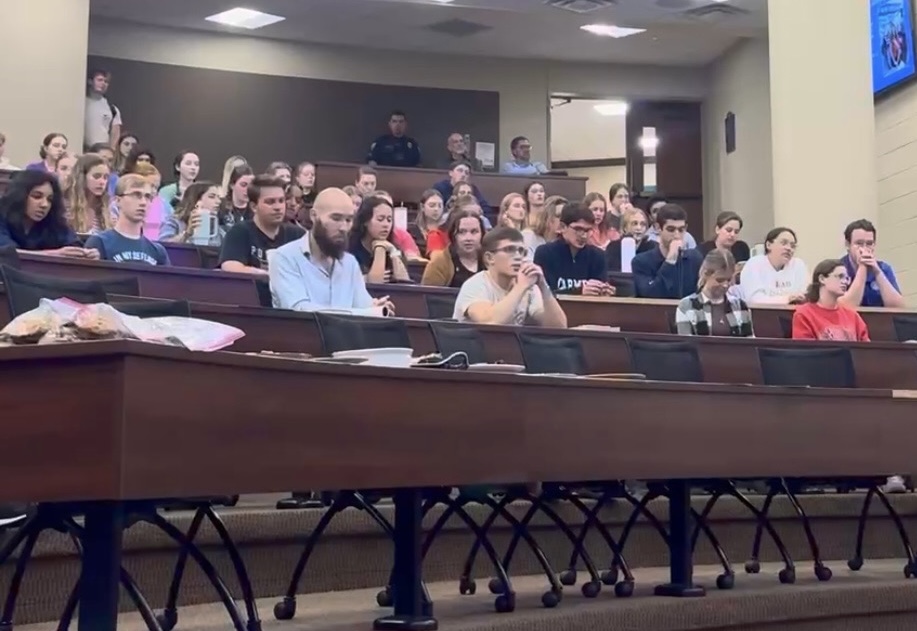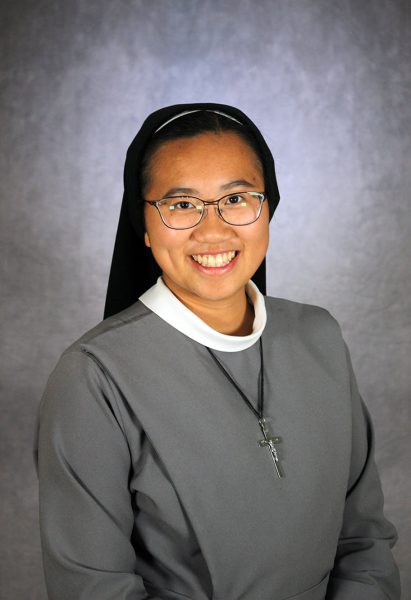For many people, their favorite Saint traces back to their childhood or their confirmation patron saint. While considering that All Saints Day is celebrated on November 1st as a Holy Day of Obligation, we thought we would ask some professors about their favorite saints.

Many athlethes have picked Saint Sebastian as their confirmation saint, but for Dr. Hans Stadthagen-Gonzalez, his reason stretches back to his birth.
Stadthagen-Gonzalez, associate professor of psychological sciences at Benedictine College, recounts how he was born on January 20th, the feastday of St. Sebastian. Since Stadthagen-Gonzalez had only a first and last name, but not a middle name, his godfather recommended he be baptized with the name Sebastian. Years later, St. Sebastian is a model of fortitude and perseverance to Stadthagen-Gonzalez.
“Instead of going away, he went back to the same city where they had attacked him and then he was martyred. I really admire that he knew what was coming to him because he had already experienced it. They had left him for death and still he went back. So for me, he’s the patron saint of people that are hard-headed for good causes, not just hard-headed, but hard-headed for things that you need to be persistent in,” said Stadthagen-Gonzalez.
Throughout his life, Stadthagen-Gonzalez has aspired to emulate the same courageous response as St. Sebastian in times of difficulty and uncertainty. “I mean, it’s easy not to give up when you don’t know what’s coming to you. But when you know that that that you’re gonna suffer and how much you’re gonna suffer and you still endure, that’s something that I admire in him,” said Stadthagen-Gonzalez.

For Sister M. Lucy Gantt, FSGM, Ph.D., the saints have continued to be a source of guidance and inspiration in making the merciful love of Christ visible. In particular, saints have walked with her throughout moments of her discernment and journey of following Christ more unconditionally each day.
When Gantt began discerning the religious life during her time of doctoral research at the University of Illinois Urbana-Champaign, she lived down the block from the Sisters of St. Francis of the Martyr St. George’s convent. The sisters introduced her to various Stations of the Cross booklets and that is where her friendship with St. Elizabeth of the Trinity began.
“One of the things that just really struck me about her when I was first reading some of her prayers and some of her writings, partially just that- praying her prayers, it’s like… my heart relates to that, it’s how I’m learning to pray. I’m not at her point, but it’s, ‘yes, my heart does speak to the Lord in that way’… Through the Stations of the Cross, there’s a prayer at the beginning: to be a bride of Christ and what it means. It’s not just one thing, but just together it was a beautiful encounter,” Gantt said.

Growing up as a non-Catholic, Dr. Paul Strycker, associate professor of physics and astronomy, had no context or association with Catholic saints. Now, his office at Benedictine College has the presence of Mary and the saints in every place one looks.
From a Guadalupe coaster to the St. George icon (given to Stryker by a friend before his conversion), to the St. Giuseppe Moscati book on his desk, his love for the Catholic faith is apparent. When Strycker became Catholic during graduate school, he began to immerse himself in the presence of the saints and in particular, the Blessed Virgin Mary.
“So, the Blessed Mother is my favorite saint. It’s so many different things, mostly I would say because of her special role as our Mother. I think the things that I’ve learned about how she is pleasing to God through all of the very quiet and hidden. There was a list of three things that describe the Blessed Mother and her work…something like hidden, ordinary, and laborious. She pleased God through her vocation and she didn’t have to do anything that was important in the eyes of the world for it to be of the greatest importance to God,” said Strycker.
Strycker did not grow up with any affinity for Mary, but through experiencing life as a Catholic, he began to see her maternity as a gift. Almost one decade ago, Strycker consecrated himself to Mary through St. Louis Marie Monfort. His favorite title of Mary remains, “Mary, Queen of All Hearts,” and Strycker seeks to embrace the simplicity and surrender of Mary.

With his vast background in the history and practice of the Catholic faith, Dr. Andrew Salzmann, associate professor of theology, has many options to pick from for his favorite saint. But the one that has guided his own study, and most importantly, his prayer- is St. Augustine of Hippo.
“He was so captivated by the mystery of God and the Mystery of the Trinity. He was always trying to reflect on it, think about it, understand it… But he also realizes that the more he can think about and reflect on God, the more he can understand the world around him which God made. And, you know, which is when we think about ourselves- He made us in his image. So, he really is a role model for us. If we want to look at God as the key that will help us make sense of the world around us and make sense of ourselves,” said Salzmann.
Salzmann’s realization of St. Augustine’s life being transformed by the encounter of Christ, directed the person and theologian Salzmann desired and still desires to emulate. “And so I think that he’s just this great role model of how his thoughts are transformed, his way of life is transformed, and he’s oriented towards community with other people and service towards other people…If we really are in love with God, then it becomes easy for us to keep the presence of God in our minds and on our hearts,” said Salzmann.
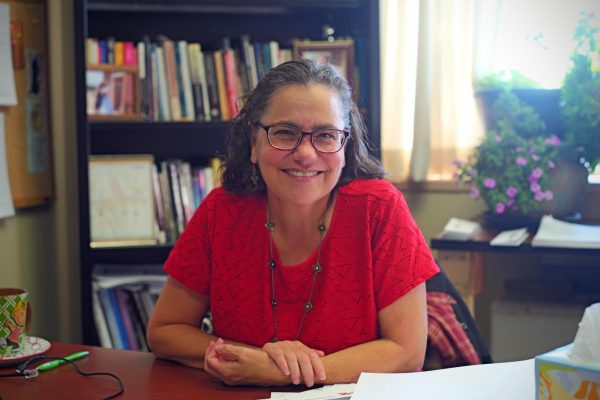
Back over in Cray-Seaburg, Karen Wood, assistant professor of sociology and criminology, finds great solace in the Saint who finds all things.
“You know, I’d pray to Our Lady and different saints, and all the patron saints of my children. I would only pray to Saint Anthony, like, when I lost something. Like, ‘oh, St. Anthony, could you help me with my keys? Or could you help me with this? Or whatever.’
And he would always do it, like, right away. It was like a miracle every time.
One time I was praying to him- probably my keys, and I found them right away. I just felt in my heart, Saint Anthony saying, ‘You know, you could talk to me about other things. It doesn’t always have to be like this emergency about your keys because I find all kinds of things.’ And immediately I just thought, ‘oh, you could help my brothers find their faith.’ I then started praying to him for people who have lost their faith to find their faith again. And it just kind of grew into this devotion,” said Wood.
Being able to visit Padua, the birthplace of St. Anthony, was an amazing experience for Wood. St. Anthony continues to help her find things, but most importantly, roots her in her faith.
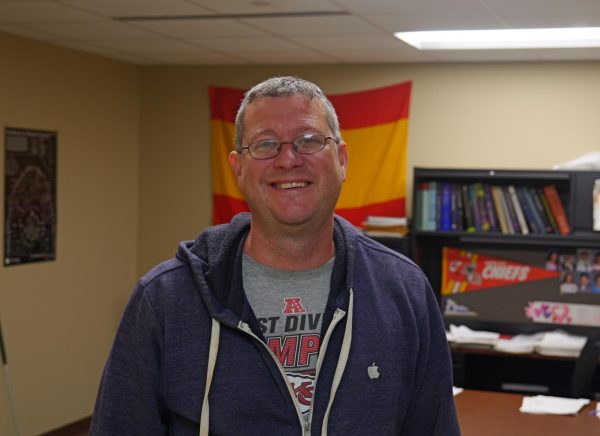
Different saints can become more prevalent during different stages or needs of our lives and it can be difficult to pinpoint just one favorite saint. For Dr. Mark Schramp, associate professor of biology, there are three saints who have continually guided his perspective on life and the importance of the virtue of faith.
“My favorite saint is the one who I try to emulate the most: it is obviously Saint Joseph. Right? He was my confirmation saint, and so I obviously just admire him for his obedience to God and for his humility. He protected Jesus and Mary as they left the Holy Land and had to go to Egypt.
“But the saint that I probably just ask for help the most, I would say, is probably Saint Anthony.
And that’s just because I lose all this, you know, things all the time, especially my golf balls. And so then I just say the the prayer my mom taught me, which is, ‘Tony, Tony, come around. Something’s lost and must be found.’ So, I tend to say that on a very regular basis- he’s probably the saint interact with the most.”
“My other favorite saint would probably be Saint Andrew. My son’s name is Andrew. I I just liked how in the bible he brought everyone to to Jesus and then especially all the non Jews, you know, and a lot of things. He kind of was this facilitator person, but he’s also the patron saint of golfers,” said Schramp.

As a philosopher, Dr. Daniel Pierson is well aware of the contributions of St. Thomas Aquinas, but his encounter with Aquinas came later than most would expect.
“My first exposure to philosophy was really, most emphatically, through a philosophy of Martin Heidegger, actually my undergraduate philosophical development, I sort of knew that I should like Aristotle and Aquinas, but I didn’t have a lot of exposure to them.
So, it was really graduate school when I started to read Aquinas in earnest, and I got interested in metaphysics and sort of ultimate question of being, which is also a concern for Heidegger, so I guess I always had that philosophical concern and all sort of came together in a kind of systematic way with Aquinas, the connection between being and God as a sort of ultimate reality,” said Pierson.
The convergence between Aquinas’ brilliance and his holiness is what makes his role in the Catholic Church a model for many.
“There are certain saints that kind of speak to you- they have a personality that kind of matches to you somehow, and I think that’s why the Church, part of the reason the Church selects certain saints to canonize and to make objects a sort of public reverence,” said Pierson.
With Aquinas in particular, Pierson is inspired by the integration of his whole life. “It’s obviously his approach to faith and reason, and how those fit together, especially with a rigorous philosophy- that consistent, rigorous philosophy that undergirds a deep spirituality, a great theologian, and a great thinker.”
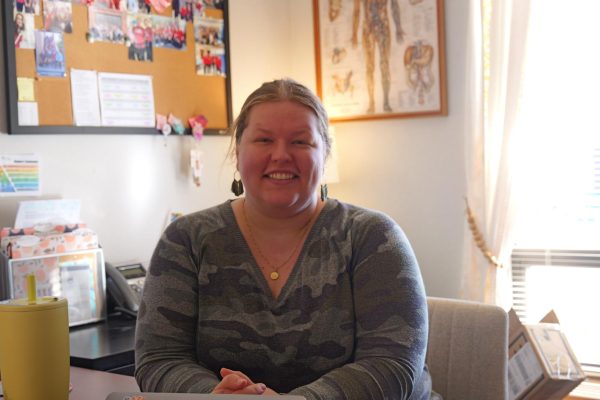
As a nurse and educator, Sarah Gillies, assistant professor of nursing at Benedictine College, has found the example of St. Teresa Benedicta of the Cross – Edith Stein, to be a source of inspiration and encouragement.
In addition to finding the name “Edith” beautiful, Gilles admires the virtues of Edith Stein. Gilles said, “I’m just really inspired by her strength and resilience. She was a teacher early on, which was also inspiring to me as a teacher. But, I think that her strength is something that I really try to aspire to. Plus, I think the name Edith is so beautiful. She was also a nurse at some point, so it’s kind of nice to have both pieces to feel really connected to her in that way too.”
Recalling how she discovered Edith Stein, Gilles had wanted to connect with a saint and through little similarities, Gilles found herself learning more about St. Teresa Benedicta of the Cross.
“The high school I went to was a Catholic all-girls school and it was founded by Jewish brothers who converted to Catholicism, and Edith was first Jewish and she converted to Catholicism. I think that conversions like that are so beautiful. I don’t have a good answer to how I found her, but I immediately felt really connected and kind of drawn to her background and story. A strong, resilient woman,” said Gilles.
With the Catholic Church’s practice of continuing to canonize saints today, the diversity and vast backgrounds of the canonized saints further adds to the splendor of God’s glory here on earth. The example of the saints holds up for us the universal call to holiness that each of us are invited into. Keeping in mind the joy of the beatific vision, let’s be saints!
